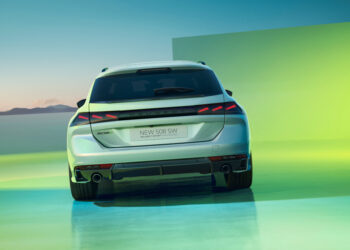The cheapest electric car on the market (not counting microcars like the Citroën AMI) will continue to serve the mobility maxim for all, but now with more and better arguments.
Three years and over 140,000 units later, the Dacia Spring receives its first relevant update to become even more competitive in the 100% electric city car segment, where it claims the status of the most affordable proposal, with prices starting at €20,400.
Among the novelties are the redesign of the front and rear, with new elements that adorn the bumpers, and two new body colors, Beige Safari and Red Brick, to add to the catalog alongside the well-known Kaolin White, Slate Blue, Pearl Black, and Lightning Gray.
Inside, the dashboard has been completely reinvented, incorporating a new range of digital screens: the customizable instrument panel with a 7-inch display and a large 10-inch central multimedia screen in the top-of-the-range models, incorporating intelligent navigation for up to 8 years, with real-time traffic conditions and updated European maps, and allowing wireless use of Apple CarPlay and Android Auto.
The new Spring also features completely white elements that help create a fresh and modular atmosphere. These elements are located around the instrument panel, gear lever, and door compartments. The iconic “Y” of Dacia, located in the center of the central air vents, is also in white (or copper in the Extreme version). The central decorative highlight on the instrument panel varies depending on the version: Alto Gray in the Essential, Red Brick in the Expression, Lichen Khaki in the Extreme.
Still inside, highlight for the YouClip accessory holder, “borrowed” from the Duster.
Keeping the compact exterior dimensions, with a length of around 3.7 meters, the new Spring now offers 308 liters of usable volume in the trunk (+6% compared to the previous model) – and 1,004 liters with the rear seats folded down. In addition, the additional storage (double glove compartment, door compartments, etc.) with a total volume of almost 33 liters is also above segment standards.
For example, a compartment under the front hood provides an additional 35 liters of storage space. The center console can also accommodate a unique cup holder, made with state-of-the-art 3D printing technology, flexible and resource-efficient.
In terms of engine options, everything remains practically the same. The Dacia Spring has positioned itself as the perfect solution for people looking for simple, economical, and efficient zero-emission mobility. And data collected through the onboard connected systems show that Spring users drive an average of 37 km per day, at an average speed of 37 km/h (in 75% of cases, the cars are charged at home), which justifies the focus on the known versions, with an electric motor of 65 hp or 45 hp in the Essential version, always in combination with the compact 26.8 kWh battery capacity, for a range of over 220 km. The brand announces an average consumption of less than 14.6 kWh/100 km for the new Spring (awaiting homologation).
As standard, the model is sold with a 7 kW AC charger that can charge the battery from 20% to 100% in less than 11 hours in a domestic socket, or in just 4 hours in a 7 kW wallbox. An optional 30 kW DC charger is available for faster charging from 20% to 80% in 45 minutes.
The ordering phase in Portugal starts in the spring, with prices yet to be revealed.










